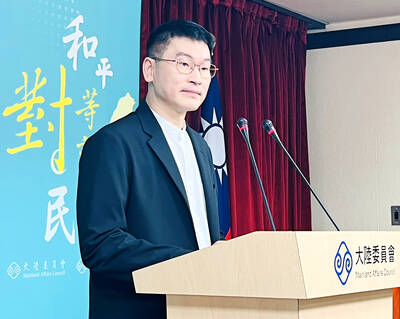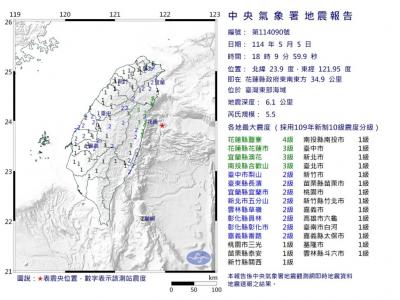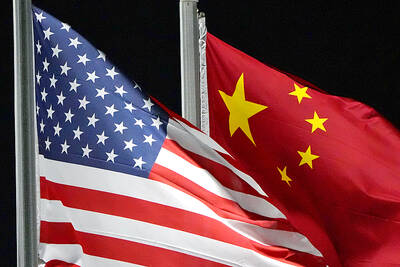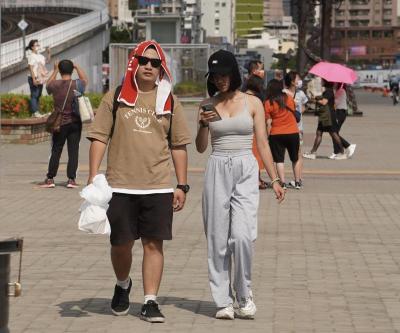Amis singer Panai Kusui has won her appeal against fines from the Taipei City Government over her protests in 228 Peace Memorial Park, but she and her allies are more focused on their long-running fight against the central government’s Aboriginal lands policy.
The Taipei Parks and Street Lights Office last year fined Panai NT$7,200 for contravening Article 13 of the Taipei City Park Management Ordinance (臺北市公園管理自治條例) on July 16, 18 and 19 by setting up tables, chairs, boxes, cabinets and structures at the park without permission.
Panai lost her initial court battle over the fines, and an appeal in February, but the Taipei District Court on July 27 ruled in favor of Panai, saying that she was exercising her freedom of speech without hindering public passage through the park or damaging its facilities.
Panai and her colleagues were back at the park on Sunday to continue their protest on the land issue and their fight for “Indigenous Transformative Justice.”
Panai declined to comment on the court verdict, saying she was not feeling well and was still working on strategies with her lawyer.
She and her allies are fighting a regulation enacted by the Council of Indigenous Peoples in February 2017 that defines and zones what can be classified as indigenous “traditional territories and lands,” following President Tsai Ing-wen’s (蔡英文) Aug. 1, 2016, promise to delineate traditional Aboriginal territories and lands.
Panai and others held a news conference in front of the Presidential Office Building on Feb. 23, 2017, to criticize the regulation, saying it excluded privately held lands, thereby limiting where Aborigines could hold traditional activities, and call for its amendment.
The council said that including private lands in traditional Aboriginal territories would violate the right of property under the Constitution, and it was not authorized by the Indigenous Peoples Basic Law (原住民族基本法) to include private lands in the regulation.
Panai and other advocates set up a protest site on Ketagalan Boulevard in May that year, before moving it to the nearby National Taiwan University Hospital MRT Station on June 4 under pressure from Taipei officials.
The city tore down displays, tents and traditional painted stones placed around the station in March 2018 and January last year, saying they were harming Taipei’s cityscape, which led the group to move to its current location in the park on Jan. 24 last year.
The city has yet to say whether it plans to appeal last month’s court ruling.

An essay competition jointly organized by a local writing society and a publisher affiliated with the Chinese Communist Party (CCP) might have contravened the Act Governing Relations Between the People of the Taiwan Area and the Mainland Area (臺灣地區與大陸地區人民關係條例), the Mainland Affairs Council (MAC) said on Thursday. “In this case, the partner organization is clearly an agency under the CCP’s Fujian Provincial Committee,” MAC Deputy Minister and spokesperson Liang Wen-chieh (梁文傑) said at a news briefing in Taipei. “It also involves bringing Taiwanese students to China with all-expenses-paid arrangements to attend award ceremonies and camps,” Liang said. Those two “characteristics” are typically sufficient

A magnitude 5.9 earthquake that struck about 33km off the coast of Hualien City was the "main shock" in a series of quakes in the area, with aftershocks expected over the next three days, the Central Weather Administration (CWA) said yesterday. Prior to the magnitude 5.9 quake shaking most of Taiwan at 6:53pm yesterday, six other earthquakes stronger than a magnitude of 4, starting with a magnitude 5.5 quake at 6:09pm, occurred in the area. CWA Seismological Center Director Wu Chien-fu (吳健富) confirmed that the quakes were all part of the same series and that the magnitude 5.5 temblor was

The brilliant blue waters, thick foliage and bucolic atmosphere on this seemingly idyllic archipelago deep in the Pacific Ocean belie the key role it now plays in a titanic geopolitical struggle. Palau is again on the front line as China, and the US and its allies prepare their forces in an intensifying contest for control over the Asia-Pacific region. The democratic nation of just 17,000 people hosts US-controlled airstrips and soon-to-be-completed radar installations that the US military describes as “critical” to monitoring vast swathes of water and airspace. It is also a key piece of the second island chain, a string of

The Central Weather Administration has issued a heat alert for southeastern Taiwan, warning of temperatures as high as 36°C today, while alerting some coastal areas of strong winds later in the day. Kaohsiung’s Neimen District (內門) and Pingtung County’s Neipu Township (內埔) are under an orange heat alert, which warns of temperatures as high as 36°C for three consecutive days, the CWA said, citing southwest winds. The heat would also extend to Tainan’s Nansi (楠西) and Yujing (玉井) districts, as well as Pingtung’s Gaoshu (高樹), Yanpu (鹽埔) and Majia (瑪家) townships, it said, forecasting highs of up to 36°C in those areas